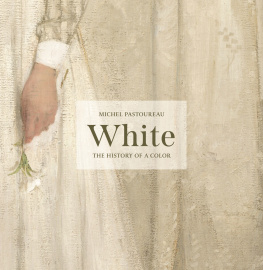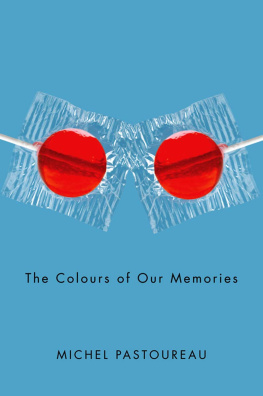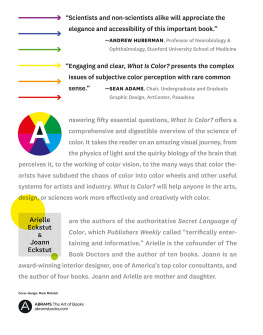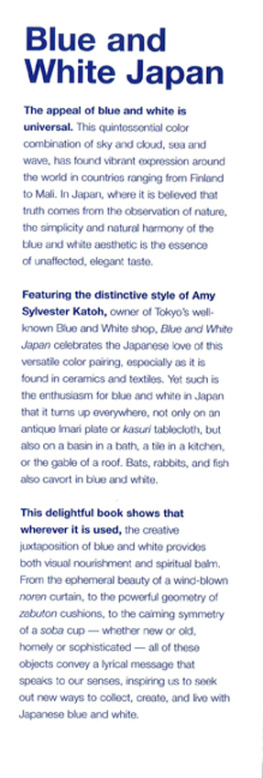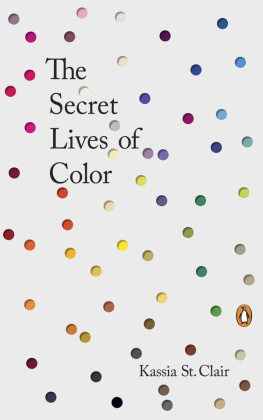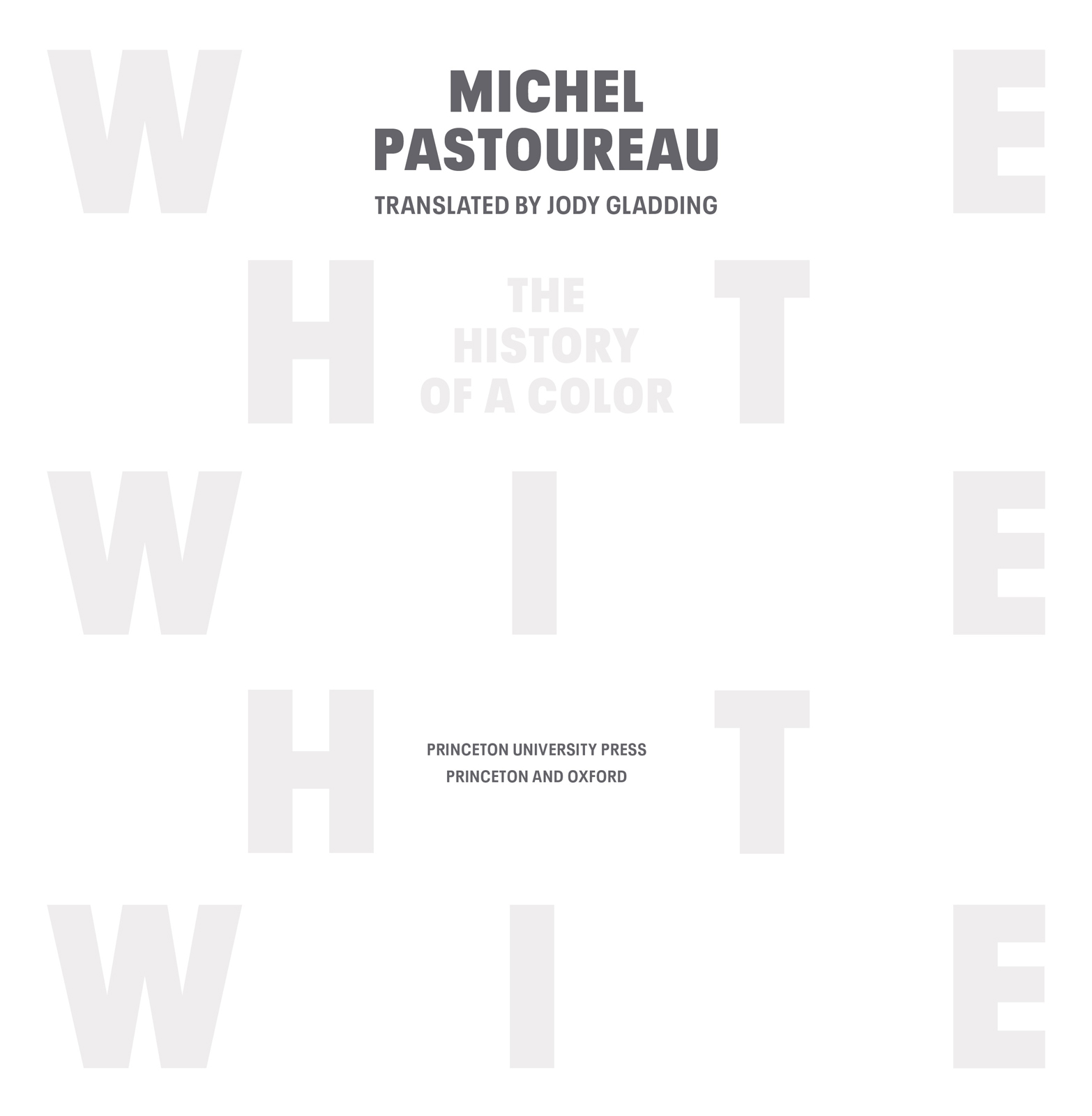
First published in the French language by ditions du Seuil, Paris, under the title Blanc: Histoire dune Couleur by Michel Pastoureau
Copyright 2022 ditions du Seuil, Paris
English translation copyright 2023 by Princeton University Press Princeton University Press is committed to the protection of copyright and the intellectual property our authors entrust to us.
Copyright promotes the progress and integrity of knowledge. Thank you for supporting free speech and the global exchange of ideas by purchasing an authorized edition of this book. If you wish to reproduce or distribute any part of it in any form, please obtain permission.
Requests for permission to reproduce material from this work should be sent to
Published by Princeton University Press, 41 William Street, Princeton, New Jersey 08540 In the United Kingdom: Princeton University Press, 99 Banbury Road, Oxford OX2 6JX
press.princeton.edu
Jacket image: James McNeill Whistler, Symphony in White, No. 1: The White Girl (detail), 18611863, 1872, oil on canvas, National Gallery of Art, Washington, Harris Whittemore Collection, 1943.6.2
ISBN 978-0-691-24349-8
eISBN: 978-0-691-25030-4
R0
FOREWORD
ROLAND BETANCOURT
S ince the publication of Blue over twenty years ago, Michel Pastoureaus the History of a Color series has explored the material, sensory, and symbolic dimensions of colors across the western world. Moving away from those who might wish to find a universal symbolism or archetypal truth in a color, Pastoureaus series has sought to understand color as first and foremost a social phenomenon, one with historically grounded realities and effects.
The famed medieval art historian Michael Camille wrote that in Pastoureaus work, the history of one color becomes the history of culture itself. As a scholar whose work was dedicated to understanding the labor of medieval artists and uncovering the voices of oppressed figures in the margins of medieval art, Camilles words showcase the power of Pastoureaus series to unsettle and disturb our familiar understanding of colors, what they represent, and how they have been mobilized over millennia for different aims and goals. In tracing the enduring life of a given color, Pastoureau has seamlessly woven ancient theories of vision with the nuances of medieval spirituality and the transformations of the early modern period during the rise of colonialism and capitalism.
In his research methods and approach, Pastoureaus series reflects two animating concerns in the study of art history and culture, namely, an interest in materiality and visuality. Over the past two decades, scholars have been attentive to how the materials and making of art contribute to their social meaning and function, while similarly seeking to understand how vision and perception affect our experiences of art. While we might take our modern understanding of optics for granted, throughout the ancient and medieval worlds philosophers, theologians, and authors contemplated and debated how sight operates and how we perceive colors, understanding this as a physical, sensory, and perceptual phenomenon. Naturally, a series that looks at the history of color contributes directly to our knowledge of how matter and vision intersect. Pastoureaus work acknowledges not only how pigments and colors were sourced, traded, made, and applied, but also how people through the ages have made meaningful distinctions between individual colors and applied purpose and meaning to them. As our research has continued to expand into the multisensory effects of the work of art, art historians have begun to look at how color, light, and optics combine with other sensory experiences, including hearing, touch, smell, taste, and other elements like the experience of weight and movement.
It is fitting that the History of a Color series would end with a volume dedicated to white. Not only did the ancient Greeks believe that all colors emerged as the intermediaries between black and white, but white also has come to be understood in the modern world as the outright absence of color. Yet nothing could be further from the truth. In this volume, Pastoureau vividly demonstrates how white was never understood as being colorless in the ancient tradition, coming only to be associated with this state of absence in the late Middle Ages and at the beginnings of modernity. The power of Pastoureaus White is that it confronts the reader with the artificiality and construction of white, tracing out the tensions it created regarding how other colors were conceptualized and understood across several millennia. As the author states, this is hardly a comprehensive work, but one that urges scholarship to think further about the history of white and how it is that it came to be understood as such an enigmatic and fraught category.
On this occasion of the publication of this sixth and last volume in the series, we can appreciate the contributions that the series has made to our understanding of color and vision, but also reflect on its utility for ongoing and future areas of study.
As a scholar whose work has not only traced theories of vision and multisensory perception in the early Christian and medieval worlds but also processes of race-making and racialization in the premodern past, I am intimately aware of how the study of color becomes as pertinent today as it was two decades ago when the series was in its infancy. Pastoureaus color studies allow the novice and expert reader alike to survey the long trajectories that colors have had across the premodern and modern world. This permits us to better understand the vicissitudes of how colors can be variously used to stage piety or penance in the medieval world, or to articulate ethnic differences and racialized groupings across ancient peoples. While it has long been assumed that color-based ideas of race did not exist in the premodern past, ongoing scholarship has begun to demonstrate the rich and compelling evidence present across ancient Greek, Roman, and medieval sources to understand how premodern people thought about racialized differences and how color could also be deployed to delineate other differences, like gender identity or even sexuality.
The material history of color itself also alerts us to the vibrant and dynamic interconnectedness of our world. While it is popularly believed that ancient or medieval people had limited interactions with the broader world, the study of trade routes, like the Silk Road or trans-Saharan trade, is expanding our horizons of contact and exchange.
As any volume of Pastoureaus series demonstrates, color is never an innocent or passive entity in our world, but an important actor in its own right. Color shapes how people have represented their own stories across time and also reminds us of how it has motivated human action around its sourcing, manufacturing, and meaning. Michel Pastoureaus the History of a Color series can serve as a starting point to further interrogate the varied and complex histories and complicities of color in our world, past, present, and future.
The study of race in antiquity and the Middle Ages is a current and thriving area of research with much work appearing constantly. Therefore, this is a very partial bibliography, but it is intended to give the reader a road map to pursue, highlighting key figures, books, and additional resources for following this area of research. For an introduction to the study of race in the ancient and medieval worlds, see Cord Whitaker,

